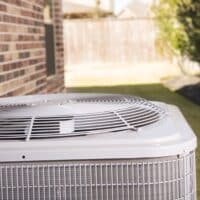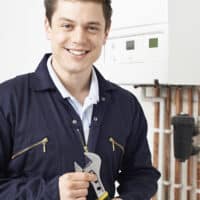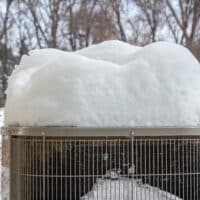Optimize HVAC for Seasonal Changes
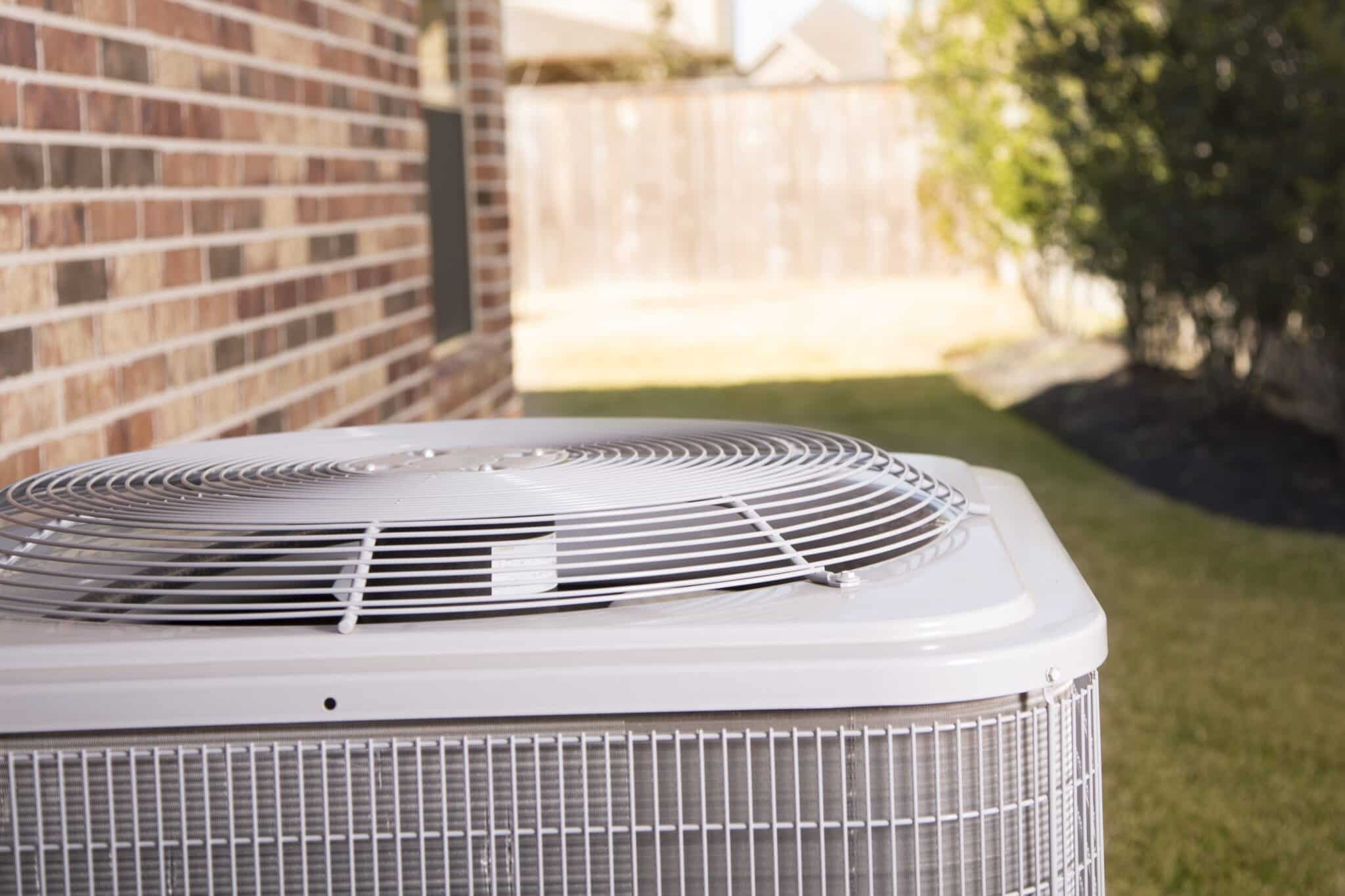
February in Scottsdale brings mild temperatures, making it an ideal time to fine-tune your HVAC system. As days grow warmer and nights stay cool, optimizing your system enhances comfort and efficiency. Proper adjustments can reduce energy costs while maintaining a cozy indoor environment. One Hour Air Conditioning & Heating of Phoenix provides expert HVAC services to keep your home comfortable through seasonal transitions. Here, we’ll share effective tips for keeping your system in top shape.
Understanding Scottsdale’s February Climate for HVAC Efficiency
In February, Scottsdale experiences mild days with temperatures averaging in the 70s and cooler nights dropping into the 40s. These daily fluctuations require a well-tuned HVAC system to maintain indoor comfort efficiently. When temperatures shift throughout the day, an adaptable thermostat setting becomes essential. During the day, setting the thermostat slightly higher can reduce energy use, while lower nighttime settings maintain comfort without overworking the system.
Efficient HVAC performance also depends on routine maintenance. Dust and debris can accumulate in filters and vents, reducing airflow and straining the system. Regularly changing air filters and cleaning vents ensures optimal performance and enhances indoor air quality. Additionally, inspecting ducts for leaks prevents energy loss, keeping your home comfortable while lowering utility bills.
February’s mild weather offers an ideal opportunity to schedule a professional HVAC inspection. By addressing minor issues early, you can avoid costly repairs and extend your system’s lifespan. One Hour Air Conditioning & Heating of Phoenix provides comprehensive maintenance services tailored to Scottsdale’s unique climate. With expert assistance, your system can efficiently handle seasonal temperature variations, ensuring year-round comfort.
Benefits of Seasonal HVAC Optimization
Optimizing your HVAC system for seasonal changes offers numerous advantages, enhancing comfort, efficiency, and cost savings. In Scottsdale, where temperatures fluctuate between mild days and cooler nights, strategic adjustments maximize performance. Here are the key benefits:
-
Improved Energy Efficiency
By aligning thermostat settings with daily temperature changes, your HVAC system consumes less energy, reducing utility bills. Using programmable thermostats also ensures efficient heating and cooling based on your schedule.
-
Extended System Lifespan
Regular maintenance, including cleaning filters and inspecting components, prevents wear and tear. This proactive approach reduces the risk of breakdowns and extends the life of your HVAC system.
-
Consistent Indoor Comfort
Seasonal adjustments help maintain stable indoor temperatures, ensuring comfort during temperature fluctuations. Proper humidity control also enhances indoor air quality.
-
Early Issue Detection
Routine inspections catch minor issues before they become costly repairs. Addressing leaks, faulty thermostats, or clogged filters early keeps the system running efficiently.
-
Cost Savings and Environmental Impact
Increased efficiency leads to lower energy consumption, reducing costs and environmental impact. An optimized HVAC system not only saves money but also decreases carbon emissions.
One Hour Air Conditioning & Heating of Phoenix provides expert services to help you maximize these benefits, ensuring your HVAC system performs efficiently throughout Scottsdale’s seasonal changes.
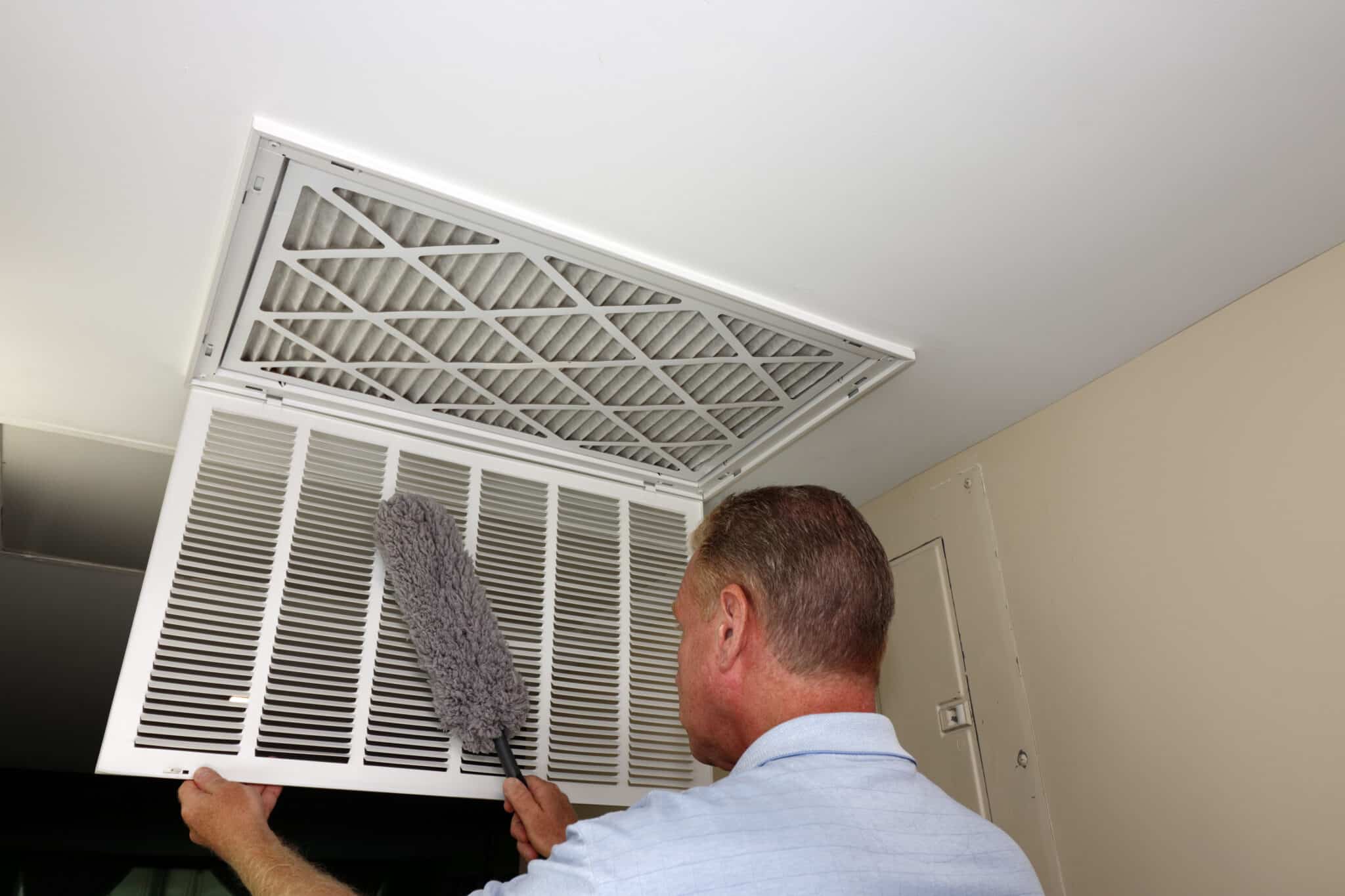
Essential HVAC Maintenance Tips for February
February is an ideal time for HVAC maintenance in Scottsdale, as the mild weather allows for necessary system adjustments without discomfort. To keep your system running efficiently and reliably, consider the following essential tips:
-
Replace Air Filters
Clogged filters restrict airflow, reducing efficiency and affecting indoor air quality. Replacing them monthly maintains optimal performance and extends the system’s lifespan.
-
Clean Ducts and Vents
Dust and debris can block airflow and decrease system efficiency. Regular cleaning prevents buildup, improving circulation and air quality.
-
Inspect Thermostats
Ensure thermostats are accurate and responsive to daily temperature changes. Programmable models provide better control, maximizing energy savings.
-
Check Electrical Connections
Loose connections may cause malfunctions or safety hazards. Tightening them ensures reliable operation and reduces the risk of system failures.
-
Schedule a Professional Tune-Up
Professional inspections help detect potential issues early, optimizing HVAC performance and preventing costly repairs. A technician can also check refrigerant levels, inspect coils, and test safety controls.
These maintenance practices enhance HVAC efficiency, lower energy bills, and ensure comfort throughout Scottsdale’s seasonal changes. Staying proactive with maintenance reduces breakdowns and extends the system’s life, making it a cost-effective strategy for year-round comfort.
Adjusting Thermostat Settings for Scottsdale’s Seasonal Shifts
In February, Scottsdale’s temperatures fluctuate between chilly nights and warm afternoons. Adjusting thermostat settings enhances HVAC efficiency and keeps your home comfortable. Here is how to optimize your system:
-
Lower Nighttime Temperatures
Setting the thermostat lower at night conserves energy while maintaining comfort. Consider lowering it by 5-10 degrees for better sleep and energy savings.
-
Daytime Adjustments
During the day, especially when no one is home, set the thermostat a few degrees higher. This reduces HVAC energy consumption without compromising comfort.
-
Use Programmable Thermostats
Programmable thermostats automatically adjust temperatures based on your schedule. This ensures efficient operation without the need for constant manual adjustments.
-
Smart Thermostat Advantages
Smart thermostats learn your daily routine and optimize HVAC settings accordingly. They also offer remote control through smartphone apps, allowing adjustments from anywhere.
-
Implement Zoning Systems
Zoning systems direct airflow only to occupied areas, enhancing HVAC efficiency. This targeted approach reduces energy use and maintains consistent temperatures throughout your home.
These strategic adjustments maximize HVAC performance, lower utility bills, and improve comfort during Scottsdale’s seasonal shifts. Fine-tuning thermostat settings ensures your system runs efficiently year-round.
Improving Indoor Air Quality During Seasonal Transitions
Seasonal changes can significantly impact indoor air quality. In February, Scottsdale experiences fluctuating pollen and dust levels, which can trigger allergies and respiratory issues. Optimizing your HVAC system and implementing strategic measures can maintain a healthy indoor environment:
-
Use High-Efficiency Filters
Upgrading to HEPA filters in your HVAC system effectively traps pollen, dust, and other allergens, enhancing air quality. Replace filters regularly to maintain efficiency.
-
Maintain Proper Ventilation
Adequate airflow prevents indoor pollutant buildup. Open windows when outdoor air quality is good or use ventilation fans to circulate fresh air.
-
Add Air Purifiers
Air purifiers with HEPA filters capture allergens and pollutants, improving indoor air quality. These are especially beneficial for allergy sufferers and homes with pets.
-
Control Humidity Levels
Scottsdale’s dry climate can increase dust circulation. Using humidifiers helps maintain balanced humidity, reducing airborne particles and enhancing comfort.
-
Regular HVAC Maintenance
Clean ducts, replace filters, and inspect the system to prevent dust buildup. Well-maintained HVAC systems circulate cleaner air and operate more efficiently.
By optimizing HVAC performance and adopting these practices, you can significantly improve indoor air quality during Scottsdale’s seasonal transitions.
Why Professional HVAC Inspections Matter in February
Scheduling a professional HVAC inspection in February is a smart preventative measure. In Scottsdale, the mild winter weather means heating and cooling systems are under less stress, making it the perfect time for a comprehensive checkup.
Here is why it is essential:
- Early Problem Detection – Technicians can spot minor issues like worn components or small leaks before they escalate into costly repairs.
- Electrical Safety Checks – Inspections include evaluating electrical connections, reducing fire risks and ensuring safe, consistent operation.
- Refrigerant Level Checks – Proper refrigerant levels are crucial for effective heating and cooling. Professionals check for leaks and recharge the system as needed.
- Improved Efficiency and Energy Savings – Clean coils, accurate thermostat settings, and unrestricted airflow enhance efficiency, lowering energy costs.
- Extended System Lifespan – Regular inspections minimize wear and tear, helping heating and cooling systems operate smoothly and last longer.
Scheduling an inspection with One Hour Air Conditioning & Heating of Phoenix ensures reliable performance and comfort during Scottsdale’s seasonal changes.
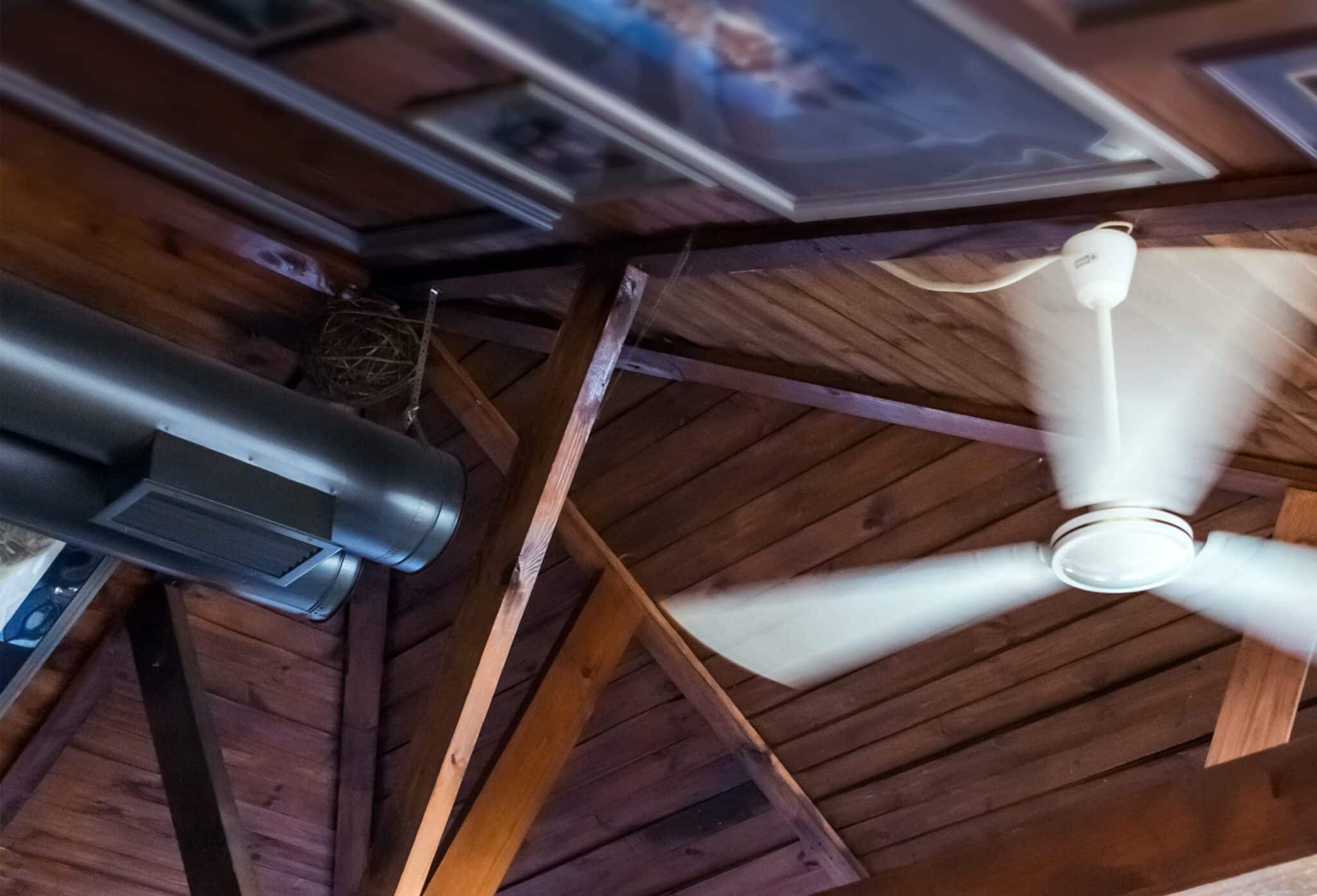
Energy-Saving Tips for HVAC Optimization
Lowering energy consumption in February’s mild climate not only reduces utility bills but also maintains indoor comfort. Here are practical tips to enhance HVAC efficiency:
-
Smart Thermostat Settings
Adjust the thermostat lower at night to save energy. During the day, set it slightly higher when the house is unoccupied. Smart thermostats learn your schedule, automatically optimizing HVAC performance for maximum efficiency.
-
Ceiling Fan Strategy
Use ceiling fans to distribute warm air. In winter, set fans to rotate clockwise at low speed, circulating heat efficiently. This allows you to lower the thermostat without compromising comfort, easing the HVAC system’s workload.
-
Seal Drafts and Insulate
Proper insulation prevents heat loss. Weatherstripping and caulking around windows and doors block drafts, helping maintain consistent indoor temperatures and reducing the demand on your HVAC system.
-
Routine HVAC Maintenance
Regular maintenance is crucial for optimal efficiency. Replace air filters monthly to ensure adequate airflow. Check ducts for leaks and clean vents to enhance system performance and reduce energy consumption.
-
Leverage Natural Sunlight
Utilize natural heat by opening curtains during the day to warm living spaces. Closing them at night helps retain heat, decreasing the need for continuous heating.
These energy-saving measures improve HVAC efficiency, lower energy costs, and maintain a comfortable indoor environment throughout February.
Common HVAC Issues During Seasonal Changes
Seasonal changes can place stress on HVAC systems, leading to a range of performance issues. Here are some common problems that occur during transitions:
-
Thermostat Malfunctions
Temperature fluctuations can cause thermostats to misread indoor temperatures or become unresponsive. Calibrating or replacing faulty units restores accurate control.
-
Uneven Heating or Cooling
Inconsistent temperatures across rooms often result from blocked vents, duct leaks, or poor thermostat placement. Cleaning vents and sealing ducts improve airflow and comfort.
-
Clogged Air Filters
Increased dust and pollen during seasonal transitions clog air filters, reducing airflow and straining the HVAC system. Replacing filters regularly maintains efficiency.
-
Refrigerant Issues
Temperature changes can cause refrigerant leaks, leading to inefficient cooling and increased energy bills. Professional repairs ensure proper refrigerant levels and system performance.
-
Increased Wear and Tear
Frequent temperature fluctuations force HVAC systems to cycle more often, accelerating component wear. Regular maintenance checks help prevent breakdowns and extend the system’s lifespan.
Addressing these common issues promptly improves HVAC efficiency and maintains indoor comfort. One Hour Air Conditioning & Heating of Phoenix offers expert solutions to effectively resolve these challenges.
Choosing the Right HVAC System Upgrades
Upgrading your HVAC system improves energy efficiency and enhances indoor comfort. Modern units are designed to handle temperature changes more effectively, reducing energy consumption. High-efficiency models maintain consistent temperatures while lowering utility bills. Smart thermostats optimize performance by learning your schedule and adjusting temperatures automatically. They also offer remote control, allowing you to manage settings from your smartphone.
Zoning systems provide customized comfort by controlling temperatures in different areas independently. This targeted approach reduces energy use and maintains consistent comfort throughout your home. Consulting with HVAC professionals ensures you choose the best system for your home’s size and layout. They evaluate factors like insulation, ductwork, and room usage to recommend the most suitable unit.
Investing in advanced technology, such as variable-speed compressors, enhances efficiency and extends the system’s lifespan. These systems adjust output based on demand, maintaining comfort without overworking. Additionally, newer models use eco-friendly refrigerants, reducing environmental impact. Choosing the right HVAC upgrade maximizes comfort, energy savings, and long-term reliability
Planning Ahead for Seasonal HVAC Transitions
Planning ahead for seasonal HVAC transitions ensures comfort, efficiency, and system longevity. Here is how to prepare effectively:
Prepare for Spring and Summer Temperatures
Gradually adjust thermostat settings to match rising temperatures. This reduces strain on the HVAC system and maintains energy efficiency. Smart thermostats can automate these changes, optimizing comfort and energy savings.
Smooth Transition of Thermostat Settings
Avoid sudden changes by adjusting temperatures incrementally. This approach keeps energy use consistent and prevents system overloads. It also maintains steady indoor temperatures.
Schedule Maintenance in Advance
Book HVAC inspections and tune-ups before peak seasons to avoid delays and costly repairs. Early maintenance ensures the system is ready for increased demand, minimizing breakdown risks. It also improves energy efficiency and extends system lifespan.
Educate Homeowners on Best Practices
Understanding seasonal HVAC requirements, like filter changes and ideal thermostat settings, enhances system performance and indoor air quality. Educated homeowners can maximize efficiency and reduce energy costs by following these practices.
Proactive HVAC planning maximizes comfort, lowers energy bills, and ensures reliable performance year-round.
Scheduling HVAC Maintenance with One Hour Air Conditioning & Heating of Phoenix
Regular maintenance is crucial for optimal HVAC performance and system longevity. One Hour Air Conditioning & Heating of Phoenix offers comprehensive services, including inspections, repairs, and upgrades. Scheduling maintenance in February prepares your system for the warmer months, ensuring reliable performance and energy efficiency.
Skilled technicians inspect components, clean coils, check refrigerant levels, and calibrate thermostats. This proactive approach maximizes efficiency, reduces energy costs, and extends the unit’s lifespan. Identifying minor issues early also prevents costly repairs and unexpected breakdowns.
Routine maintenance maintains indoor comfort and protects your investment. One Hour Air Conditioning & Heating of Phoenix provides customized maintenance plans, ensuring consistent performance throughout the year. Professional care enhances efficiency and reliability, keeping your HVAC system running smoothly.
Conclusion: Optimize HVAC for Comfort and Savings
Optimizing your HVAC system for seasonal changes enhances comfort and energy efficiency. In February, Scottsdale’s variable temperatures require strategic adjustments and regular maintenance. By scheduling professional inspections and following energy-saving tips, you maximize efficiency and reduce utility costs. Partnering with One Hour Air Conditioning & Heating of Phoenix ensures your system is ready for any weather. Regular maintenance checks extend system lifespan, prevent costly repairs, and maintain indoor air quality. Schedule a maintenance check today to enjoy consistent comfort and cost savings year-round.
Frequently Asked Questions
-
How often should HVAC systems be serviced?
HVAC systems should be serviced twice a year—once in the spring before cooling season and once in the fall before the heating season. Regular maintenance ensures efficiency, prevents breakdowns, and extends the system’s lifespan. It also improves indoor air quality by keeping filters and ducts clean. Professional inspections identify minor issues early, avoiding costly repairs and ensuring reliable performance.
-
What are the best thermostat settings for February in Scottsdale?
In February, daytime temperatures between 68-72°F provide comfort and energy efficiency. Lower nighttime settings by 5-10 degrees to conserve energy. Using a smart thermostat optimizes HVAC performance by adjusting temperatures automatically based on your schedule. This strategy enhances comfort while reducing energy costs.
-
How do I know if my system needs an upgrade?
Consider upgrading if your system is over 10-15 years old, frequently needs repairs, or struggles to maintain consistent temperatures. High energy bills, unusual noises, and poor indoor air quality are also signs of inefficiency. Upgrading to an energy-efficient model reduces operating costs and improves comfort. Consulting with HVAC professionals helps you choose the right system for your needs.
-
What’s the difference between smart and programmable thermostats?
Smart thermostats learn your schedule and adjust temperatures automatically, maximizing energy efficiency. They offer remote control through smartphone apps and provide energy usage insights. Programmable thermostats require manual scheduling but still improve energy savings by maintaining consistent settings. Both options enhance HVAC efficiency, but smart thermostats provide greater convenience and adaptability.
-
When should I replace air filters to maintain indoor air quality?
Replace air filters every 1-3 months, depending on usage and household conditions. Homes with pets, allergy sufferers, or high dust levels need more frequent changes. Regular filter replacement maintains air quality and keeps HVAC systems running efficiently. Clogged filters reduce airflow, strain the system, and increase energy costs.
Optimize your HVAC system for comfort and efficiency. Contact One Hour Air Conditioning & Heating of Phoenix today for reliable service and expert maintenance.





